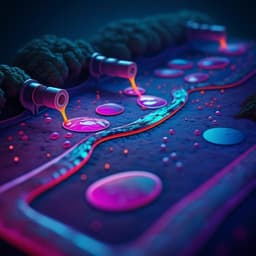
Engineering and Technology
Residual polymer stabiliser causes anisotropic electrical conductivity during inkjet printing of metal nanoparticles
G. F. Trindade, F. Wang, et al.
Discover how inkjet printing of metal nanoparticles is revolutionizing the design of functional electronic devices! This research, conducted by Gustavo F. Trindade and colleagues, uncovers the secrets behind the anisotropic electrical conductivity caused by organic residuals in inks, paving the way for improved nanomaterial formulations in printed electronics.
Playback language: English
Related Publications
Explore these studies to deepen your understanding of the subject.







